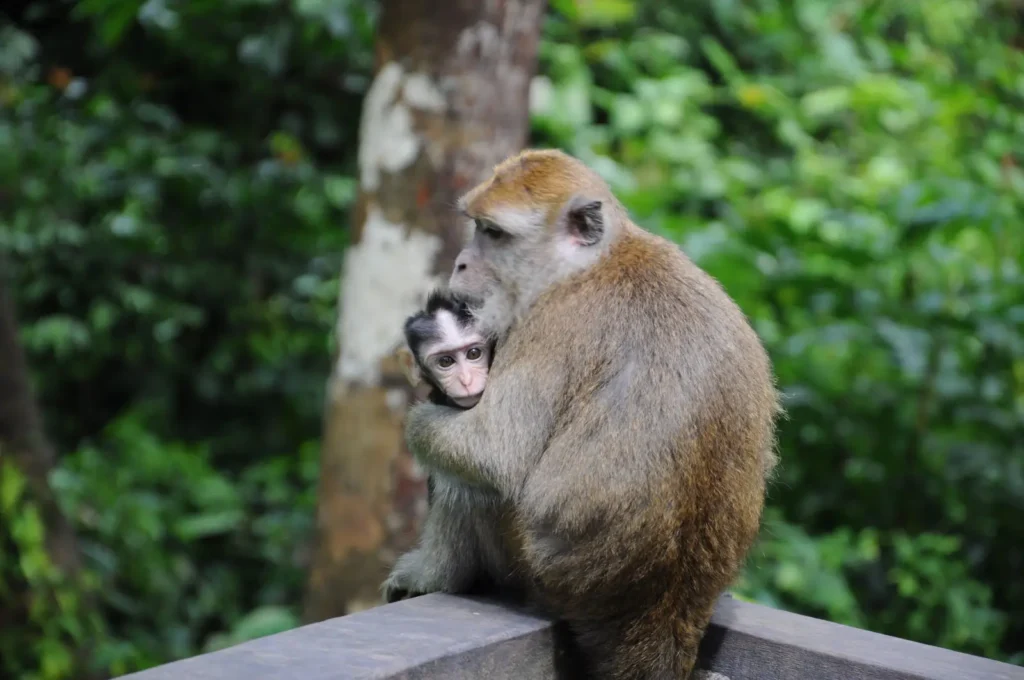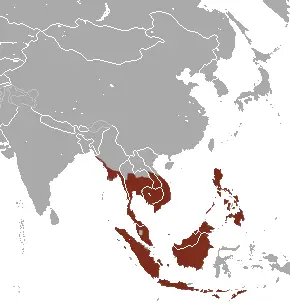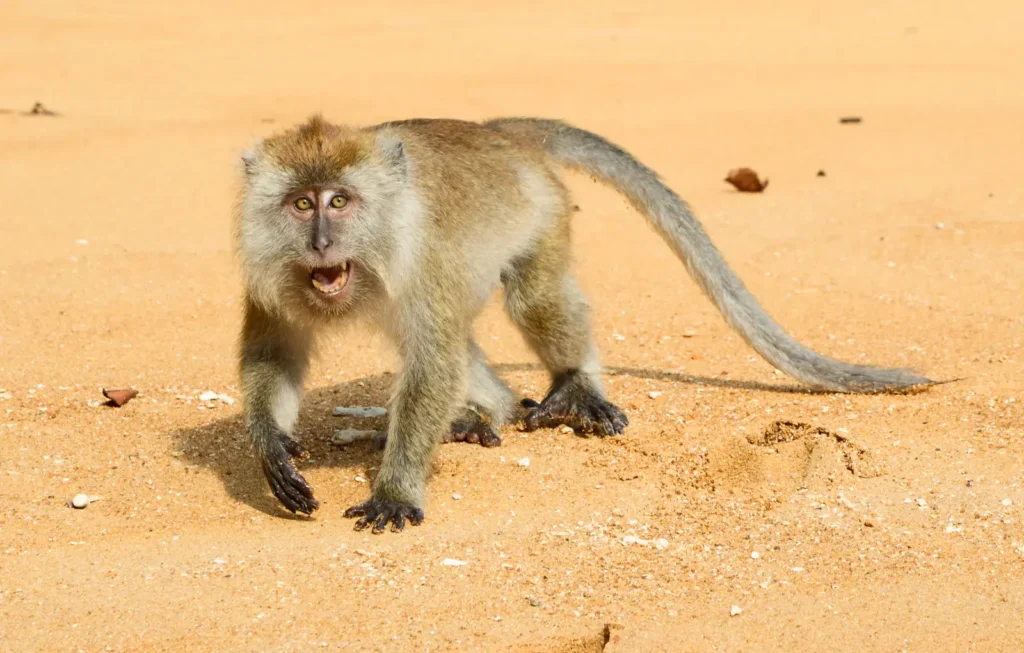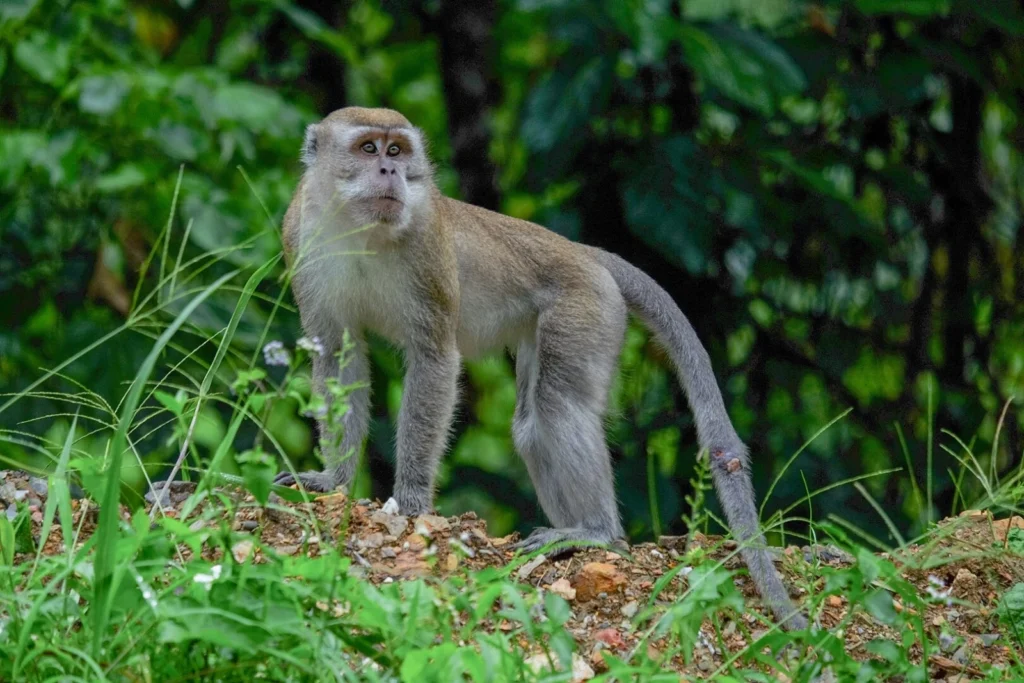Crab-eating macaque (Macaca fascicularis) is one of the most common species of macaque, known for its long, flexible neck, excellent swimming ability, and love of seafood. These omnivorous primates are found both in wild forests and mangroves, and in human settlements, where they often become notorious "food thieves". Their intelligence, sociality, and adaptability make them one of the most interesting primates in Southeast Asia.

📚 Classification
• Kingdom: Animalia (Animalia)
• Type: Chordates (Chordata)
• Class: Mammals (Mammalia)
• Order: Primates (Primates)
• Family: Monkeys (Cercopithecidae)
• Genus: Macaque (Macaque)
• View: Macaca fascicularis
👀 Appearance
• Body length: 38–55 cm (males are larger than females)
• Tail length: 40–65 cm
• Weight: males 4–8 kg, females 3–6 kg
• Lifespan: 20–30 years
The body is slender, covered with grayish-brown fur. The muzzle is light, with dark eyebrows, the eyes are expressive and observant. The long tail helps balance when moving through trees.

🌍 Range and habitat
• Range: Southeast Asia — Indonesia, Malaysia, Philippines, Thailand, Cambodia, Vietnam, Myanmar
• Not found in Ukraine, kept in zoos
Crab-eating macaques live in tropical and mangrove forests, on the banks of rivers and lagoons, as well as in urban and rural areas, where they find easy prey among human waste or crops.
🐾 Behavior and social life
• Live in groups of 10 to 100 individuals
• Strict hierarchy with a dominant male
• Communicate through gestures, facial expressions, and vocalizations
• They can swim and dive for prey
These primates are remarkably adaptable to changing environments. Their groups are very close-knit, with constant interactions between members, from grooming to foraging together.

🌿 Food
• Omnivorous: fruits, leaves, seeds, small animals, bird eggs
• Love crabs, clams and other seafood
• Often steal food from people, especially in tourist areas
Macaques are capable of using tools—for example, stones to break shells.
🐣 Reproduction
• Sexual maturity: 4–6 years
• Gestation: about 162 days
• Offspring: 1 cub
• The mother feeds the baby with milk for up to a year, but it starts trying solid food early.
The cubs hold on to their mother while moving, gradually learning to climb and forage for food.
⚠️ Human interaction
• Often come into contact with humans, sometimes become pests to crops
• Used in scientific research and as a tourist attraction
• Can carry zoonotic diseases, including herpes B virus

📉 Conservation status
• IUCN: lowest risk (Least Concern)
• Population: large, but declining in some regions
• Threats: habitat destruction, hunting, commercial fishing
💡 Interesting facts
✔️ They can swim long distances and dive for food
✔️ Can open bottles and packages by imitating humans
✔️ In some temples in Thailand and Bali, they are considered sacred
✔️ They can remember places where they once found food
✅ Conclusion
The crab-eating macaque is a prime example of an animal that can coexist with both wildlife and humans. Their intelligence, social organization, and adaptability make them one of the most successful primates in Southeast Asia 🐒🌿.
